No bones about it: What you should know about Massachusetts' state dinosaur
- Oops!Something went wrong.Please try again later.
- Oops!Something went wrong.Please try again later.
- Oops!Something went wrong.Please try again later.
BOSTON — It’s official. With the ceremonial signing of a bill by Gov. Charlie Baker Wednesday at the Museum of Science, Massachusetts has a designated dinosaur to join the list of representative state icons: From the now rare mayflower (state flower) to the turkey (state game bird) and the ladybug (state insect).
The Podokesaurus holyokensis, aka "swift-footed lizard" from Holyoke, was discovered in 1910 by Mount Holyoke College professor and paleontologist Mignon Talbot, the first woman scientist to discover a non-avian dinosaur species.
It was launched to state stardom by Rep. Jack Patrick Lewis, D-Framingham, during the height of the COVID-19 pandemic when he was seeking a project that would involve his youngest son’s Cub Scout troop.
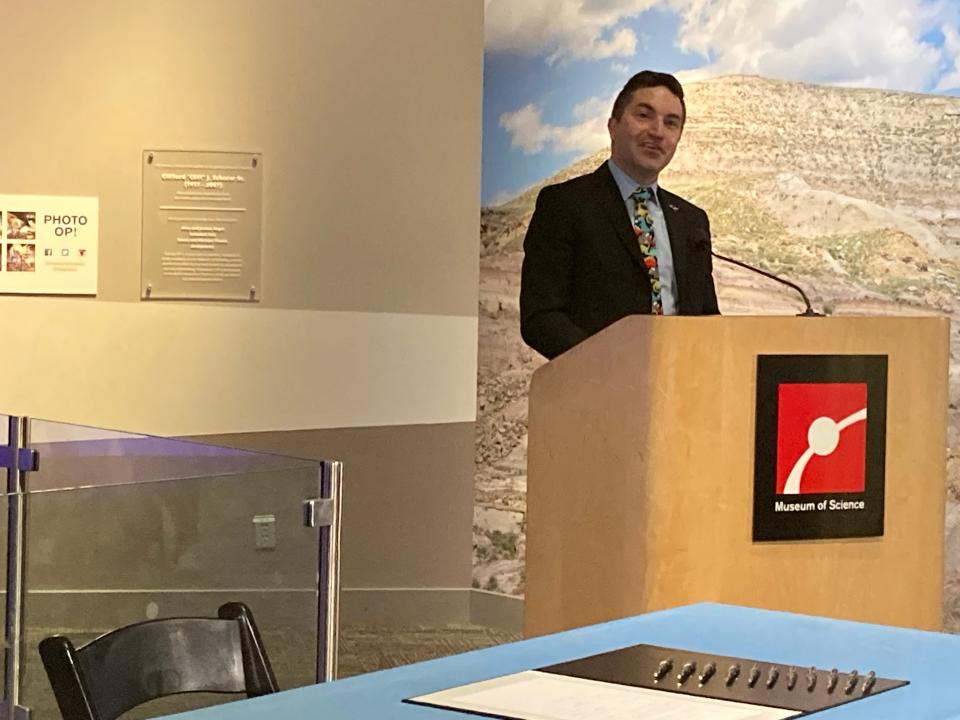
History of the legislation: What is the Massachusetts state dinosaur? Podokesaurus holokensis given the honor
He found state dinosaurs listed as official icons for a dozen states and asked himself: Why doesn’t Massachusetts have one?
“Then I remembered that I could file legislation to introduce the idea of a state dinosaur,” Lewis said.
The quest for a state dinosaur was on.
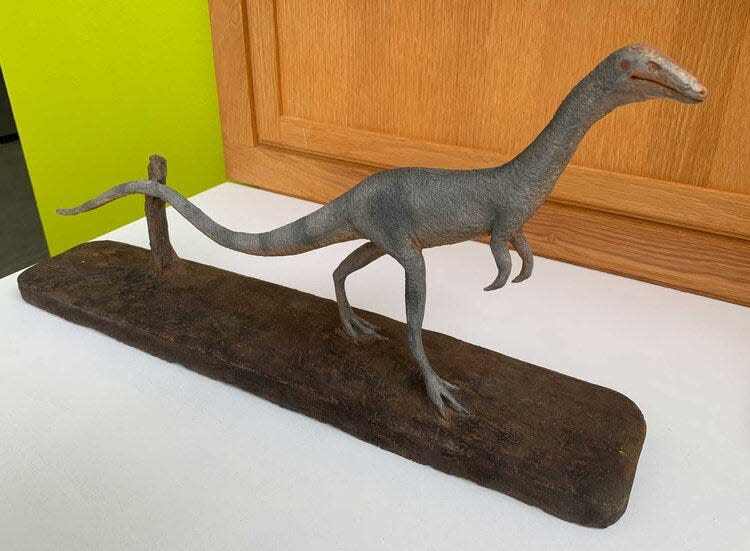
Lewis tweeted out his proposed project: Pick a state dinosaur for Massachusetts with a poll. In the running, so to speak, was Podokesaurus holyokensis, a carnivore, and more slow-footed herbivore cousin, Anchisaurus polyzelus.
Lewis was expecting maybe 200 or so responses. Instead, 35,000 residents chimed in to make a pick.
“People needed something to talk about,” Lewis said, that didn't involve the pandemic, social distancing, hand sanitizer or masks.
He said the quest for a state dinosaur ended up connecting residents with their representatives in the House and the Senate.

“Many people’s first connection to their representatives was about dinosaurs,” Lewis said, adding that constituents could then more easily access their representatives for help with issues dealing from lost jobs and health insurance to unemployment and other issues.
Why having state dino is important
Baker, who confessed to a childhood fascination with dinosaurs, credits the creatures with sparking his interest in other topics and noted that dinosaurs are a portal into science for many youngsters.
The bill signing coincided with a statewide, weeklong celebration of science, technology, engineering and math (STEM), organized by Lt. Gov. Karyn Polito.
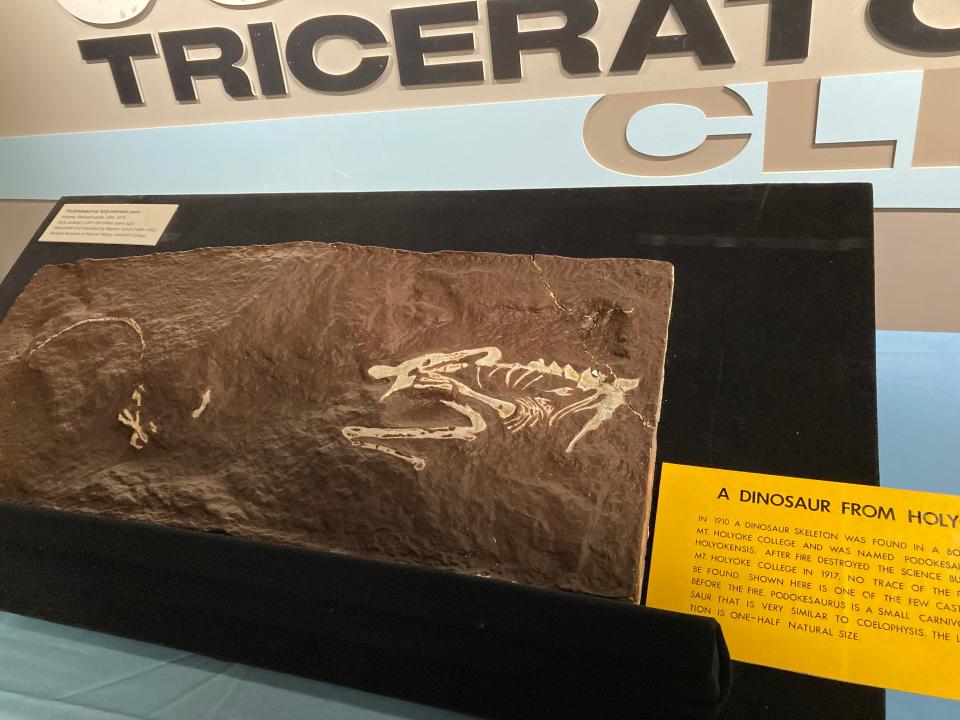
“STEM is fun, important and empowering,” Polito said, thanking the Museum of Science for being a partner with the state in the selection of the icon, as well as the weeklong STEM initiative
MA state symbols: Cranberries, babingtonite and more
Other legislators working on the mission were Reps. Mindy Domb, D-Amherst, Dan Carey, D-Easthampton, and Sen. Jo Comerford, D-Northampton.
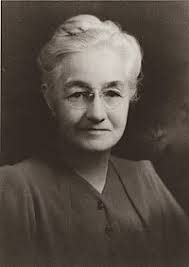
How dinosaur was discovered
Talbot discovered the only known fossils of Podokesaurus holyokensis in 1910, while on a walk with her sister near Mount Holyoke College. Talbot saw white streaks on a large sandstone rock, inspected it and was reported to have said, “I’ve found a real live fossil!”
Her discovery was reported in the American Journal of Science in June 1911.
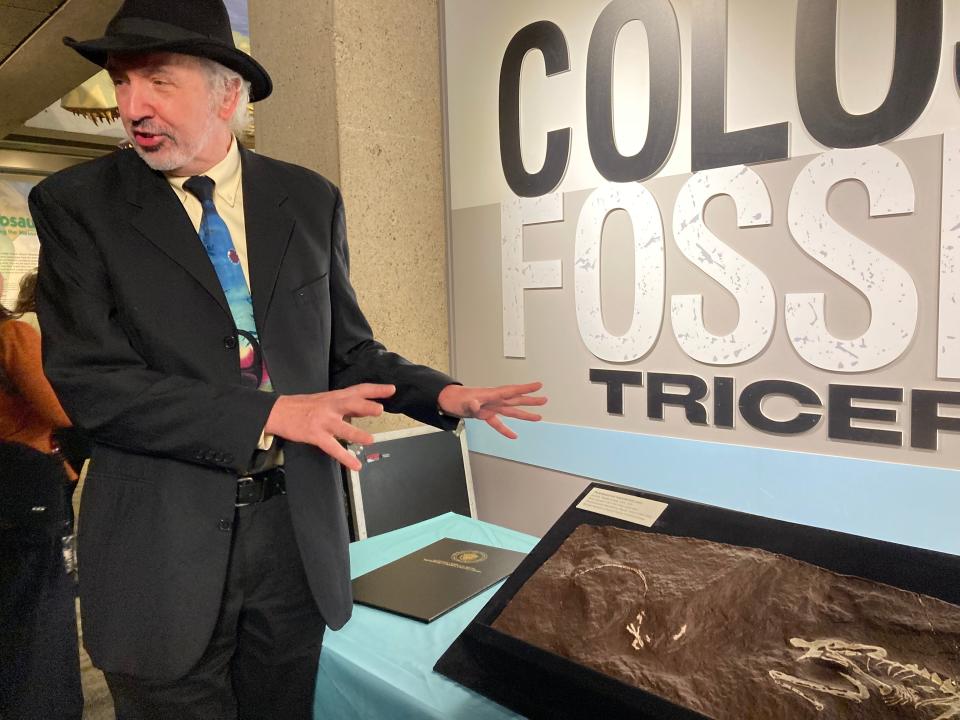
Scientists at the time were grappling with the actual nature of dinosaurs; the premise that birds are direct descendants of dinosaurs was controversial. But professor Mark McMenamin, a paleontologist now teaching at Mount Holyoke, said birds are definitely living dinosaurs.
What have we learned about birds, dinosaurs
On display at the museum, alongside a model of a Tyrannosaurus rex, is a chicken skeleton. McMenamin pointed to the bird’s ribcage, explaining that both creatures shared the same tiny riblets that held their chests immobile. That rigidity accommodates airflow.
Birds, McMenamin said, have continuous, unidirectional airflow; in through the mouth and out through the nostrils, a much more efficient system than humans have. He called it a superpower. The chicken skeleton proves there is a direct link from a creature that existed in the Jurassic period to modern birds.

Even with the selection of an iconic state dinosaur, the work of Massachusetts dinosaur experts, geologists and archeologists is far from over. Footprints of the ancient behemoths are rife in the landscape, but actual fossils are rare.
Even the fossil found and excavated by Talbot, and the sandstone that once encased it, are gone, lost in a 1917 fire that destroyed the building where Podokesaurus holyokensis was on display.
What type of dinosaur fossils are in Mass.
So the next quest is to find more fossils that McMenamin asserts are out there.
“There’s a significant fossil record in Massachusetts,” McMenamin said. Most of the fossils, experts agree, would be located in Western Massachusetts, in the Connecticut Valley. Experts have taken samples of the rock that once encased fossils to analyze them and use the information to direct them to the next dig.
“It’s like a fingerprint of the sediment,” McMenamin said. He described his profession as part detective, part paleontologist, part geoforensics, “trying to figure out the mysteries from millions of years ago,” using all the scientific tools at his disposal.
Talk about cold cases.
This article originally appeared on Telegram & Gazette: Fleet-footed lizard: MA dinosaur law signed by Gov. Charlie Baker
